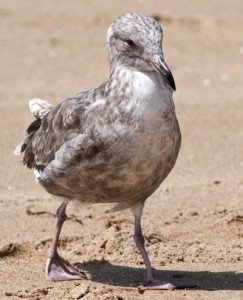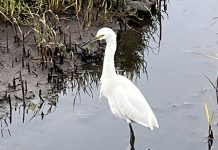In the ’70s I was a tween with a passion for reading and I came across Richard Bach’s “Jonathan Livingston Seagull.” I read it over and over the summer of its discovery.
It is the story of a seagull bored with the daily squabbles over food who seeks out enlightenment through his passion for flight. Because of his search for perfection and unwillingness to conform, he is cast out of his flock. As an outcast, he continues to learn, becoming increasingly pleased with his abilities as he leads an idyllic seaside life of self-actualization.
He essentially goes from being Grasshopper to Master Po, finding like-minded seagulls that also yearn for a higher consciousness.
Now, I didn’t grow up anywhere near the beach. Though I loved our occasional family visits to the seaside, I was landlocked in Glendale, where smog and heat were omnipresent during the summertime. Therefore, I was clueless as far as seagulls were concerned.
Fueled by what I had read, in my mind seagulls were the most beautiful and graceful creatures in the world. I even considered them smart. I mean, you have to be a pretty smart seagull to yearn for something more in life than pilfered Doritos and bait boat rejects, right?
Fast forward to my post-high school relocation to idyllic Corona del Mar and the reality of life in a place where the average seagull is nothing like my dear Jonathan.

My first gull reality check came early one morning as I was awakened by several of the birds squabbling over a discarded McDonald’s bag in the alley behind the house. Those gulls made more racket trying to get to the last fry than anything I had ever heard. The bag was torn to shreds and these gulls definitely were not bored with squabbling over food. They made it look like an Olympic sport!
The next was sitting outside a local coffee shop early one morning. As I tossed the crumbs of my bran muffin to a few gulls gathered in the parking lot, the store owner came out and angrily said, “Don’t feed those seagulls, they (poop) on everything!”
Yikes, I didn’t even get a chance to apologize before he stormed back in to his establishment. Needless to say, it was the last time I ever willingly fed a seagull.
As a result of these experiences, my former illusions, held from that long ago literary discovery, were soon replaced by the same sentiment I have when I see a possum or a rat: a very un-Zen general repulsion.
There is a reason many people refer to seagulls as rats with wings.
Now don’t get me wrong. From a distance, there is nothing more beautiful than a flock of seagulls taking wing or standing placidly along the seashore as waves gently lap at their tiny webbed feet. But up close and personal can be another matter.
This subject came up again the other day as we prepared to enjoy a nice sunset dinner on our deck. As I walked back in the house to grab some water, I heard my hubby yell “Shoo!” just as a seagull nonchalantly landed on the table and proceeded to help itself to not one, but two slices of tender, juicy London broil before flying away. I swear it looked like he actually had a smile on his beak as if to say, “Ha! Finders keepers, lady!”
Sheesh, I didn’t even know seagulls ate red meat!
Despite the fact that Jonathan Livingston Seagull does not live in Newport, I will remember his wise words from the book: “Don’t believe what your eyes are telling you. All they show is limitation. Look with your understanding. Find out what you already know and you will see the way to fly.”
Or at least the way not to put dinner at an empty table outside when hungry gulls are eyeing our food.
Lynn Selich can be reached at LynnSelich@yahoo.com.




